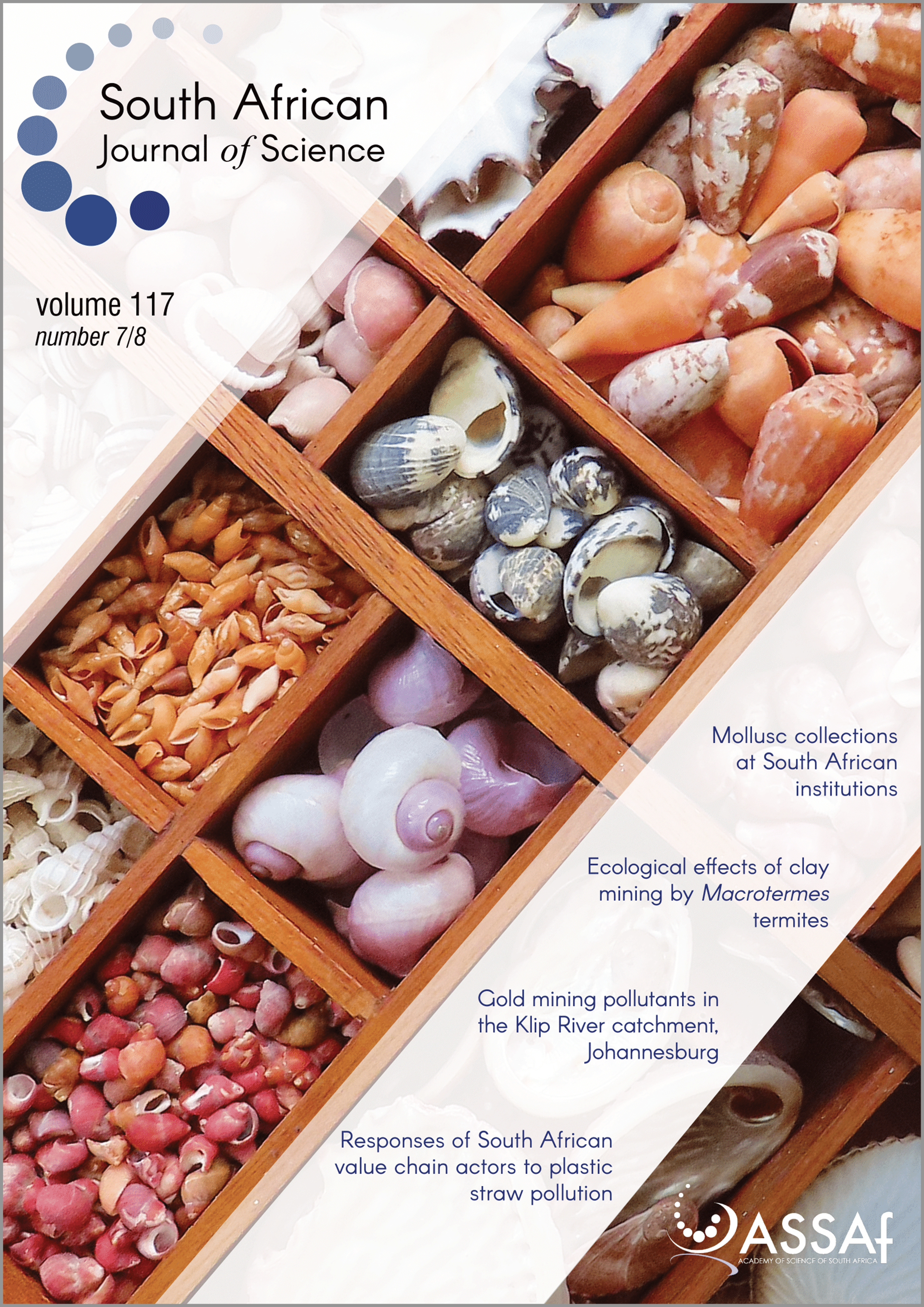Mollusc collections at South African institutions: Development and current status
DOI:
https://doi.org/10.17159/sajs.2021/8984Keywords:
Mollusca, collection, South Africa, database, taxonomyAbstract
There are three major mollusc collections in South Africa and seven smaller, thematic collections. The KwaZulu-Natal Museum holds one of the largest collections in the southern hemisphere. Its strengths are marine molluscs of southern Africa and the southwestern Indian Ocean, and terrestrial molluscs of South Africa. Research on marine molluscs has led to revisionary papers across a wide range of gastropod families. The Iziko South African Museum contains the most comprehensive collections of Cephalopoda (octopus, squid and relatives) and Polyplacophora (chitons) for southern Africa. The East London Museum is a provincial museum of the Eastern Cape. Recent research focuses on terrestrial molluscs and the collection is growing to address the gap in knowledge of this element of biodiversity. Mollusc collections in South Africa date to about 1900 and are an invaluable resource of morphological and genetic diversity, with associated spatial and temporal data. The South African National Biodiversity Institute is encouraging discovery and documentation to address gaps in knowledge, particularly of invertebrates. Museums are supported with grants for surveys, systematic studies and data mobilisation. The Department of Science and Innovation is investing in collections as irreplaceable research infrastructure through the Natural Science Collections Facility, whereby 16 institutions, including those holding mollusc collections, are assisted to achieve common targets and coordinated outputs.
Significance:
- Mollusc collections are among the oldest natural science collections in South Africa, dating from just before 1900. They provide an invaluable resource of morphological and genetic diversity, with associated spatial and temporal data. They are spread across the country in three comprehensive and seven smaller, thematic collections and this paper puts together available information about these scattered and diverse collections. Each has its own strengths and specialisations, and together they cater to a variety of the country’s identified research priorities. Although staff complements are small, mollusc collections are well curated and conserved, expanding, actively researched and associated data are available online or on request.
Downloads
Published
Issue
Section
License

All articles are published under a Creative Commons Attribution 4.0 International Licence
Copyright is retained by the authors. Readers are welcome to reproduce, share and adapt the content without permission provided the source is attributed.
Disclaimer: The publisher and editors accept no responsibility for statements made by the authors
How to Cite
- Abstract 949
- PDF 1122
- EPUB 167
- XML 274
- Supplementary material 139













.png)